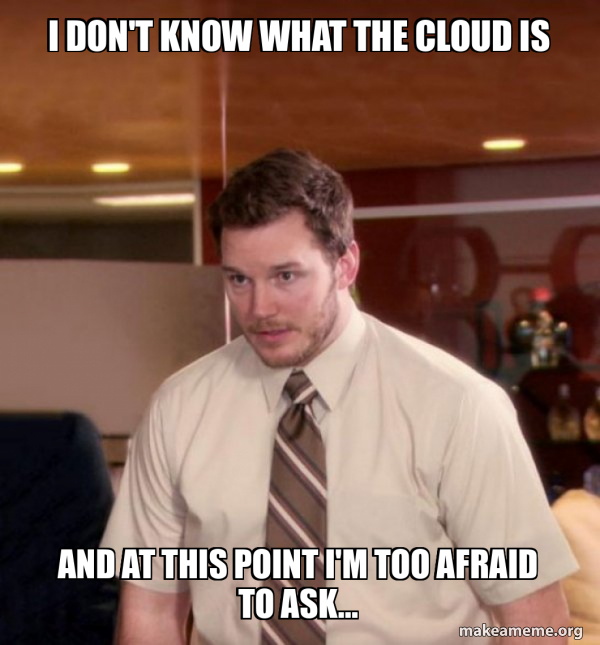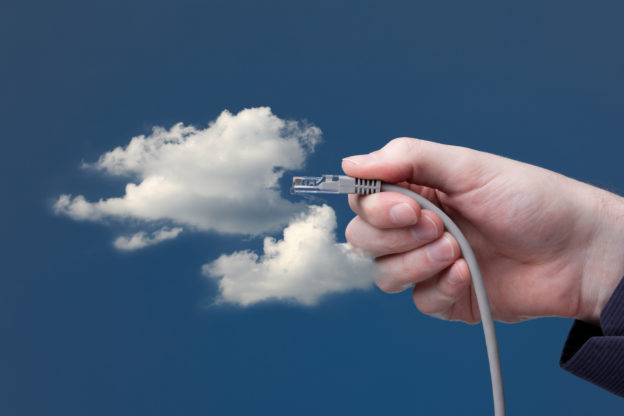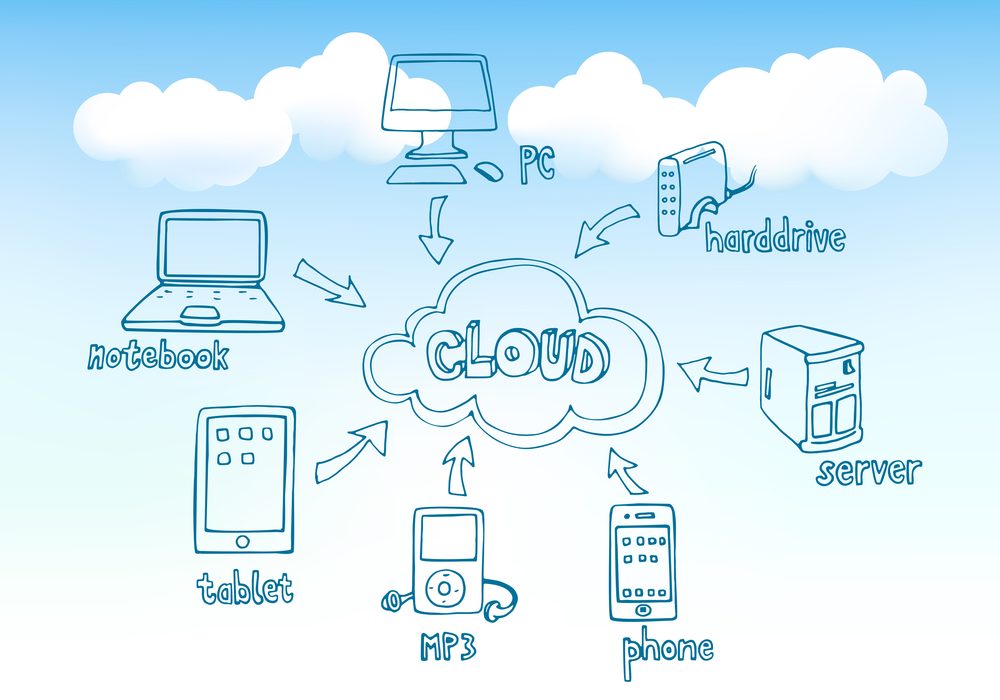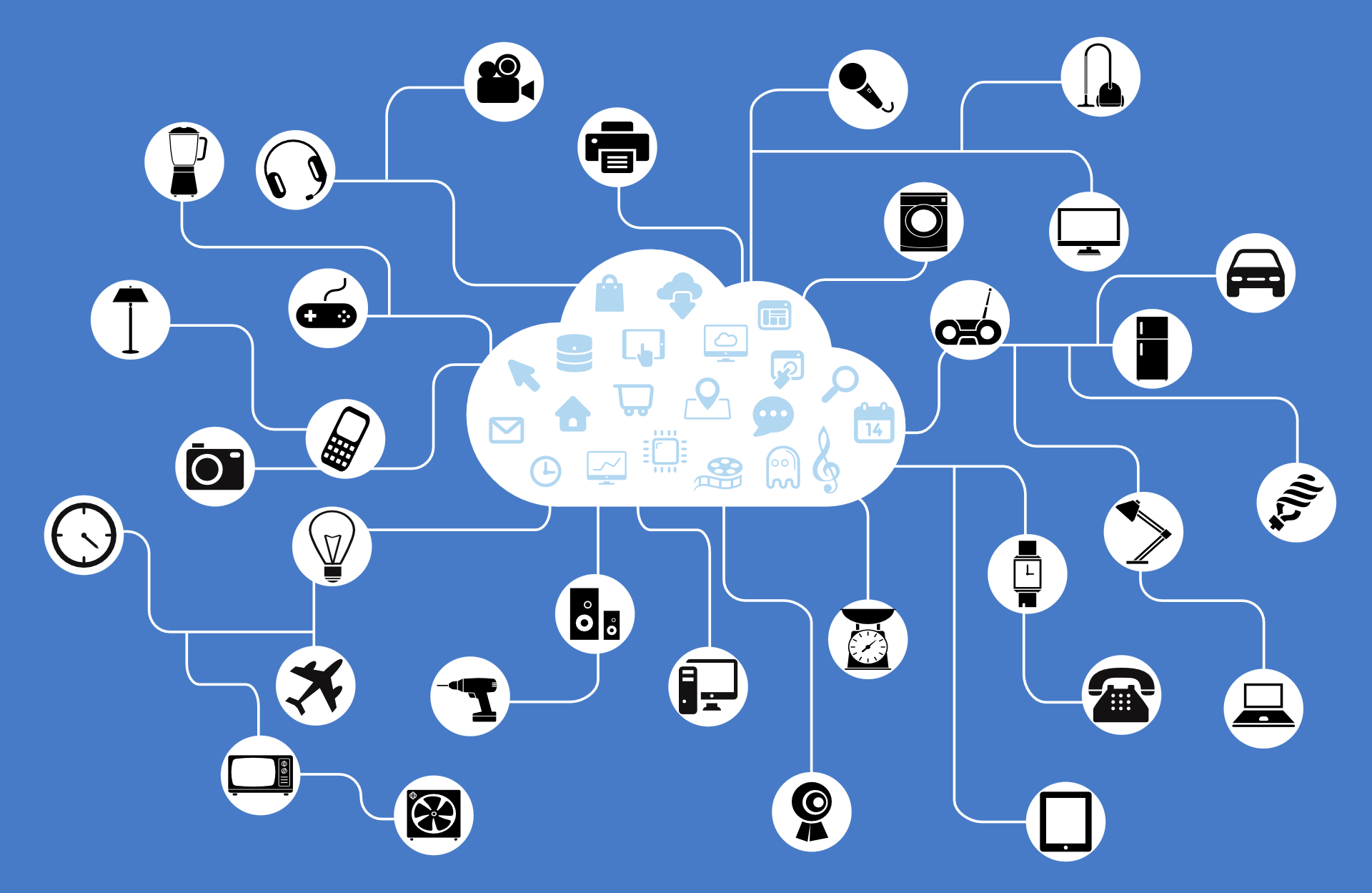I don’t know what “the cloud” is, and at this point I’m too afraid to ask
You can work in “the cloud”. Your data is in “the cloud.” It’s been repeated ad nauseam by every tech industry leader in an interview and by every IT department technician you get stuck talking to at the water cooler. But what exactly is “the cloud”?
Despite the name, your data isn’t actually floating 15,000 feet above the ground in heavenly bliss. It’s on earth. Many different places on earth. “The cloud” simply refers to the multitude of softwares and services that are saved on the internet instead of locally on your computer.

These softwares and services can be accessed by browsers like Chrome, Safari, or a dedicated app like Angry Birds or Instagram. Google drive, Netflix, Dropbox and millions of other software and services you may be familiar with are all on the cloud.
Why it’s time to move to the cloud
It’s amazing to think that in 2022 many government offices are still using pen and paper to pass along important information. They own and maintain aging hardware to store their data and rely on-site servers that are vulnerable to attack to manage the operational needs of their department. But it’s been well known that the government has usually been a decade behind the private market when it comes to innovation.
Software has been around for decades now, so we have plenty of case studies and data to show how cloud services can heavily benefit government offices. There’s customization so you can get faster results, regular updates that provide new security features, integrations with other softwares to maximize efficiency, cost savings in both time and money, etc.
Slowly, we are seeing the government sector embrace the cloud. Everything from Next Generation 911, Dispatch Centers, Real Time Crime Centers, Public Healthcare, and even the Department of Veterans Affairs.

States like Montana have challenged their entire government to transition to the cloud. The government of Utah County is leading a 100% technology adoption campaign. The great government innovation revolution (trademark pending) has begun!
Benefits of Cloud Transition
Better Security
By hosting your own data and software on local servers in the building’s closet or basement, you are limited and constrained to your own IT and digital security teams. Comparing those resources to the security of a cloud data center is like comparing Fort Knox to a piggy bank.
SaaS companies also provide top level encryption for your data, both in flight and at rest (meaning your data is stored in a digital vault and then transported in a digital armored tank). Every year Verizon issues a Data Breach Report that looks at thousands of cyber attacks across all verticals. In 2021, of the 79,635 incidents analyzed the overwhelming origin of those incidents occurred from human error.
Tools like IRIS Systems encrypt communications to coworkers and colleagues, both in transit and at rest. You also have to verify a connection with someone before being able to communicate, providing an extra layer of security. If a message containing confidential information is sent to the wrong person, it can easily be deleted on your screen and theirs, unlike an email.
Cost Savings
During the pandemic we have seen many supply chain constraints, increased costs for goods, and decreased production. This leads to more expensive hardware, slow shipping times, and delayed order entry. Physical hardware needed to host software solutions are costly in terms of upfront costs, install, and maintenance.
Allowing a SaaS company to build the Software in their data center and host your data will free up costs and physical space. This also allows for quick software upgrades, which will typically push automatically.
Better productivity
Successful businesses know that by streamlining tasks you get faster work, faster results, and more profits. Government is not a for-profit business, but it does answer to its citizens, which are increasingly demanding en masse that their governments be more efficient. Automation of tedious tasks, workflows, and processes through software adoption is the first step to that efficiency.
Better time management
Time management is arguably the strongest technique to make the most of your workday. Google Calendar is one example of a cloud service that integrates with practically every productivity program. We used to write down events and meetings on paper planners (every Gen Z reader is laughing right now) and have to check it constantly to know where to be. Cloud services like Google eliminated all of that hassle and streamlined the process.
Faster more efficient communication.
The pandemic showed just how powerful cloud adoption can be. The world went into remote work mode in 2020 and services like Zoom, Google Meet, Confluence, and many others exploded in popularity. Cloud services ensured that a distributed and isolated workforce can still be productive and efficient. Thanks to the cloud, the economy only slowed down slightly instead of crashing completely.
Building a partnership with a SaaS company

At IRIS Systems, as a SaaS company, we are actively looking for more than just customers, we are looking for partners. Oftentimes, SaaS companies enjoy partnering with key users, which results in mutually beneficial relationships for both parties.
A partnership typically has decreased subscription fees, ability to request personalized features that help you fix unique problems, influence over product development, and hosting user groups which provides great networking opportunities.
If you are interested in partnering with us, please reach out directly to myself or my co-founder, Kurt. We’d be happy to discuss why transitioning your communication to a SaaS partner might benefit your organization.

